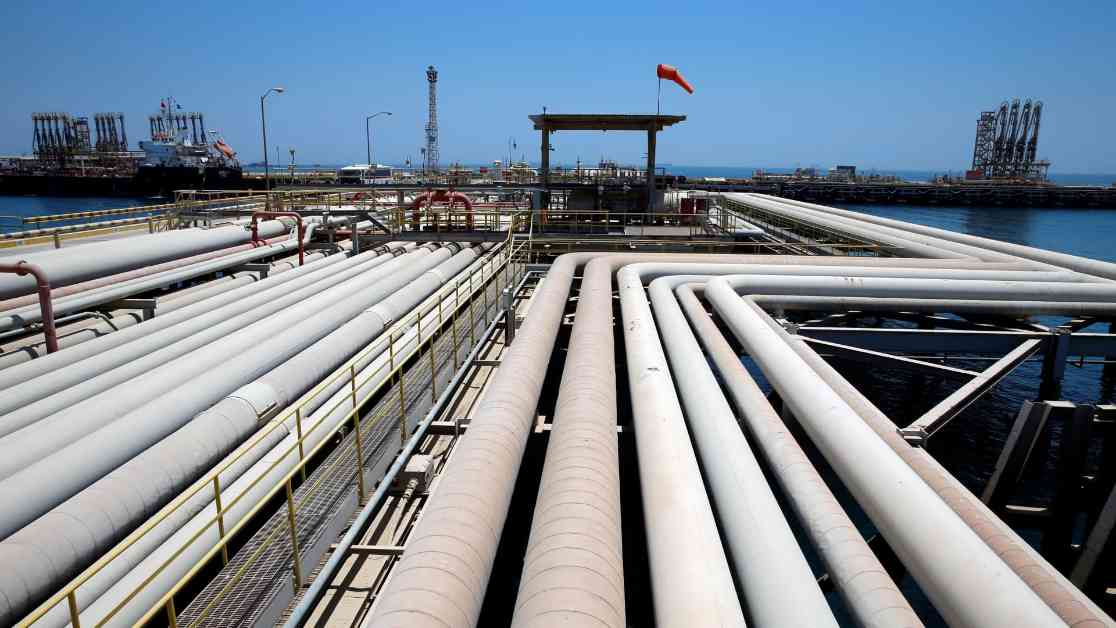U.S. crude oil experienced a weekly loss as the possibility of increased oil supplies from Saudi Arabia loomed large on the horizon. Despite China’s efforts to stimulate its economy, the U.S. benchmark West Texas Intermediate saw a decline of approximately 5% this week, while the global benchmark Brent dropped nearly 4%. This downward trend in prices occurred even amidst escalating conflict in the Middle East, with Israel launching an airstrike in Beirut targeting Hezbollah leader Hassan Nasrallah. Despite the unrest, Dan Yergin, vice chairman of S&P Global, noted that there has been no disruption in oil supply, contributing to the decline in prices.
Market Analysis and Expert Insights
Yergin further highlighted that there is still over five million barrels a day of shut-in capacity in the Middle East, indicating a surplus in the oil market. The closing energy prices on Friday reflected the impact of these factors:
– West Texas Intermediate November contract: $68.18 per barrel, down 51 cents or 0.75%. Year to date, U.S. crude oil is down nearly 5%.
– Brent November contract: $71.98 per barrel, off 38 cents or 0.53%. Year to date, the global benchmark is down more than 6%.
– RBOB Gasoline October contract: $1.953 per gallon, down 0.42%. Year to date, gasoline is down about 7%.
– Natural Gas November contract: $2.902 per thousand cubic feet, up 5.41%. Year to date, gas is up more than 15%.
The decline in oil prices was triggered by reports suggesting that Saudi Arabia is planning to increase production later this year, even if it leads to prolonged periods of lower prices. Despite the postponement of planned output hikes from October to December by OPEC+, analysts speculate that the group might delay the hikes further due to the prevailing low oil prices. The sell-off in oil also nullified gains made earlier in the week following China’s announcement of new economic stimulus measures. Soft demand in China has been a persistent factor weighing on the oil market for several months.
China’s Economic Influence and Market Speculation
Yergin emphasized the significant role that China plays in global oil demand, stating, “Half the growth in world oil demand over a number of years has simply been in China, and it hasn’t been happening.” The market is grappling with the uncertainty surrounding China’s economic recovery and the effectiveness of the stimulus measures implemented by the government.
The energy market landscape is evolving rapidly, with various factors influencing prices and demand. In light of recent developments, experts have provided valuable insights and recommendations for investors and traders to navigate the volatile market conditions:
– Goldman Sachs recommends specific energy stocks to capitalize on the slump in crude oil prices.
– Morgan Stanley has revised its oil forecast, citing traders’ expectations of a demand slowdown akin to a mild recession.
– Bank of America highlights utilities as the hottest trade of 2024, advising investors to focus on this sector instead of technology stocks.
– Morgan Stanley projects a 50% rally in renewable energy stocks driven by increased data center demand from the tech industry.
Staying Informed with CNBC PRO
For the latest updates on oil prices and industry trends, CNBC PRO offers comprehensive coverage to keep investors informed and equipped with valuable insights. Stay abreast of market shifts, emerging opportunities, and expert analysis to make informed decisions in the dynamic energy sector.
In conclusion, the fluctuating oil market reflects a delicate balance of supply and demand dynamics, geopolitical tensions, and economic stimuli. As investors navigate these uncertainties, staying informed and leveraging expert insights are key to navigating the evolving energy landscape successfully.

















